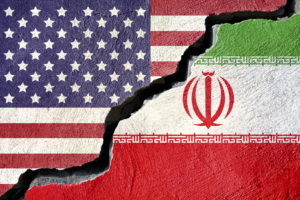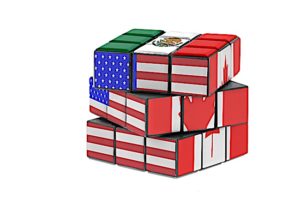News & Insights
What’s Next for the USMCA and When Will It Take Effect?
Now that Canada, Mexico and the United State have ratified[1] the United States-Mexico-Canada Agreement (USMCA) and have passed the Agreement through their national legislatures, what will happen next? The USMCA is the intended successor agreement to the North American Free Trade Agreement (NAFTA). Some have jokingly referred to the USMCA as simply “NAFTA 2.0” while others characterize it as a simple update of the NAFTA. Although it does retain most of NAFTA’s chapters[2] and is structured similarly to the NAFTA, the USMCA is actually much more than a mere revision. It is important for importers, exports and other international practitioners to know the status of implementation of the USMCA.
Background
The USMCA was a hotly negotiated exercise in modernizing the NAFTA which has been in existence for more than 25 years, long before the advent of digital trade and online retail. The USMCA was proposed by President Trump with the goal of updating and converting the NAFTA into a modern 21st Century free trade agreement. Negotiations began in 2017 and continued with eight rounds of talks amongst the Parties. The USMCA was signed by the U.S., Canada and Mexico in November 2018 during the G20 Summit in Buenos Aires. Mexico was the first Party to ratify the USMCA, which viewed the Agreement as ultimately beneficiary to its economy. Canada, rather reluctantly, was the last to ratify the agreement.
Much of the contention during the USMCA negotiations centered around the U.S. dairy industry’s access to the Canadian market, Canada’s demand that the mechanism for settling antidumping and countervailing duty disputes remain unchanged,[3] sunset provisions for the Agreement, greater enforcement mechanisms (especially for intellectual property), more stringent North American regional value content requirements for eligible merchandise, enhanced labor and environmental provisions, and new provisions addressing issues including digital trade and anti-corruption. The USMCA also significantly modifies certain provisions of the NAFTA, most noticeably the Investor State Dispute Settlement (“ISDS”) provision that provided for arbitration by independent tribunals of investor disputes between and amongst the Parties. After USMCA is implemented, Canada will no longer participate in ISDS.
USMCA Implementation
Once ratification has been completed, the USMCA requires the Parties to roll out internal regulations under their local laws to implement all of the provisions of the Agreement. That is, each Party must make legal and regulatory changes to their national laws and regulations to comply with their commitments under the USMCA, such as rules of origin, tariffs, panel rosters related to dispute resolution, establishment of committees such as the one called for in the chapter on small and medium-sized enterprises, labor law implementation in Mexico, among others. In addition, the Parties may seek to confirm that the others have fully implemented the USMCA. For example, the U.S. may seek to verify that Mexico has fully implemented labor reforms to protect workers’ rights.
Once the internal laws and regulations have been aligned with the USMCA, the Parties must issue notifications that they have done so. The USMCA will enter into force on the first day of the third month following receipt of the last Party’s notification. (In addition, the President must notify Congress at least 30 days prior to the USMCA’s entry into force that all parties have completed their preliminary obligations under the Agreement.) Although the U.S. has indicated that it wants to have the Agreement enter into force on June 1, 2020, the U.S. has not yet issued its own notification to the other Parties.
On April 20, 2020, Customs and Border Protection (CBP) issued CSMS #42429822 which provides Interim Implementation Instructions for the USMCA. However, CBP specifically described the Interim Implementation Instructions as “informational” and stated that they are intended only to “provide early guidance” on the USMCA requirements. Apparently, the instructions are intended to respond to the importing public’s queries with respect to anticipated changes to import procedures from NAFTA to USMCA, and to assist importers to plan for those changes. As such, the instructions do not have the force of law and are subject to further revision. CBP stated that the Final Implementing Instructions will be released prior to the date the USMCA enters into force.
Although no formal announcement has been made as to whether the preferred June 1st effective date will be pushed back, the USMCA is not likely to enter into force until July 2020, sometime in late summer 2020, or perhaps even January 1, 2021 in view of the COVID-19 global pandemic and pushback from the automotive industry and Congress. For example—
- On March 30th, 19 U.S. Senators, from both sides of the aisle, issued a letter to the U.S. Trade Representative (USTR) requesting that the June 1st start date be pushed back in view of the existing pressures on U.S. companies resulting from the spread of the coronavirus.
- On March 13th, the American Automotive Policy Council, Here for America, National Automobile Dealers Association, American International Automobile Dealers Association and Motor & Equipment Manufacturers Association issued a statement requesting that the Trump Administration push back the starting date for the USMCA in view of the global pandemic and uncertainty as to how the USMCA Parties will interpret the new rules of origin.
- On February 24th, Mexican automotive industry associations, including AMIA, ANPACT and INA, issued a letter to Foreign Minister Marcelo Ebrard and Economy Minister Graciela Marquez requesting that the entry into force of the USMCA be pushed back to January 1, 2021 given the lack of clarity about the content rules which has prevented companies from adjusting their supply chains.
Given the current state of universal shutdown as a result of the COVID-19 pandemic, the June 1st date is extremely unrealistic and would likely be impossible to meet. And until the USMCA enters into force, the NAFTA requirements will remain in effect.
_______________________________________________________________________________________________
[1] Mexico on June 19, 2019; the United States on January 29,2020; Canada on March 13, 2020.
[2] The USMCA consists of 34 chapters and 12 side letters.
[3] The binational panel mechanism provides for a review of a Party’s final administrative decision in antidumping/countervailing duty cases in lieu of judicial review in domestic courts. Ms. Louie is member of the United States roster of lawyers eligible for selection to a binational panel.
Miller Proctor Law PLLC will continue to track the implementation and entry into force of the USMCA. If you have any questions relating to the NAFTA requirements, the USMCA or other international trade-related issues, please contact us.
News & Insights

Cheers to Lower Federal Excise Taxes on Imports of Beer, Wine and Distilled Spirits!
On December 22, 2017, “The Craft Beverage Modernization and Tax Reform Act” (“the Act”), was signed into law by President Trump making significant changes to the federal excise tax rates assessed on wines, distilled spirits and beer. The Act formally

Did You Miss These Recent Significant Export and Sanctions Regulatory Developments?
The following provides a snapshot of recent regulatory export and sanctions developments in case you happened to miss these key news items: OFAC Sanctions Key Players in Iran’s Oil Sector On October 26, 2020, the Treasury Department’s Office of Foreign


